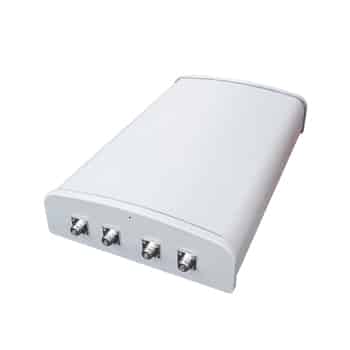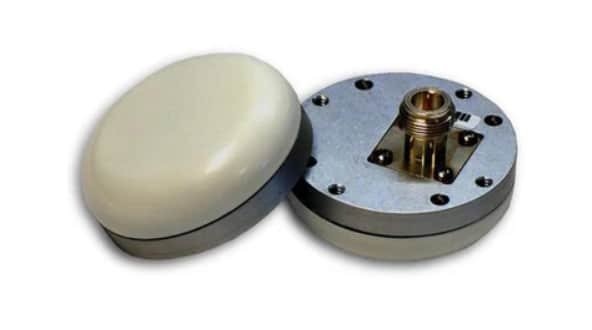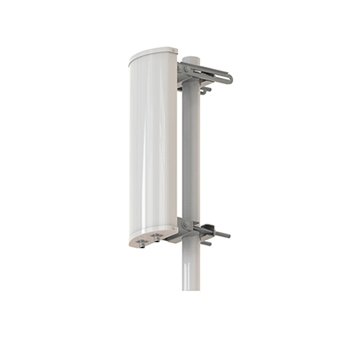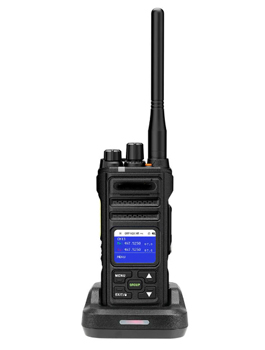In this article, we will be discussing how to choose a suitable Low Power Wide Area Network (LPWAN) technology for a massive Internet of Things (IoT) application. LPWAN IoT networks are becoming popular due to their long-range operation and low cost. For this purpose, we will briefly go through what drives LPWAN and its emerging popularity. Then, we will briefly compare the main LPWAN technologies based on their specifications and applications.
Table of Contents
ToggleWhy LPWAN is popular?
LPWAN has become popular with the advancement of massive IoT applications which extend for long range. However, it is not only the long range of operation that drives the popularity of LPWAN, but there are other reasons as well. The major reasons for the emergence of LPWAN can be identified as follows:
- Protocols such as ZigBee and BLE are not capable of supporting long-range of operation
- Cellular based long-range communication such as 4G-LTE and 3G consumed excessive energy despite their good coverage
- Deployment of communication over a long range was comparatively costly.
Therefore, the above reasons gave rise to the LPWAN technologies which had a large coverage over a long-range while consuming low energy for operation with low device cost. These factors were critical in realizing massive IoT applications such as Smart Cities, and Smart agriculture applications. Also, it is estimated that increasingly LPWAN-based IoT applications will appear in the industry, where 1 in 4 Industrial IoT (IIoT) applications will be LPWAN-based by 2025.
Accordingly, we can see that long range of operation spanning up to 15 km in a rural setting, and low power consumption leading to a device lifespan up to 10 years and low device complexity leading to low device cost are the main driving forces for the popularity of the LPWAN-based IoT applications.
Technical comparison of different LPWAN options
Before, going into different LPWAN options, we can divide LPWAN technologies into two distinct categories, namely:
- Licensed LPWAN: These are LPWAN technologies based on the public cellular frequency spectrum. Examples of licensed LPWAN include; NB-IoT and LTE-M.
- Unlicensed LPWAN: These are LPAN technologies based on unlicensed frequency spectrum. Examples of unlicensed LPWAN include; LoRaWAN and Sigfox.
The choice between licensed and unlicensed LPWAN is dependent on the IoT application requirements such as reliability, security, and expected mobility of the entire system. Having a basic understanding of different types of LPWAN technologies, now let us investigate some LPWAN technologies.
LoRaWAN is a famous and uprising LPWAN option, which facilitates long-range operation for battery-powered devices. An interesting feature of LoRaWAN devices is their less complexity which yields lower device costs. It is based on an unlicensed frequency spectrum and is capable of bidirectional communication, with good immunity to interference. The ability to develop private networks makes LoRaWAN stand out from the other LPWAN options that we will consider later in this article.
Sigfox is a narrowband technology developed by a startup in France that is best accustomed to low bandwidth applications with more concern given for energy consumption. Like LoRaWAN, Sigfox operates in unlicensed frequency spectrum, however, it has limited bidirectional communication capability when compared to LoRaWAN. Finally, Sigfox is being adapted to IoT applications in North America and Europe and is currently expanding to regions like Asia.
NB-IoT, however, is a licensed LPWAN, which operates in the cellular frequency spectrum. It can be considered as the response from cellular network providers in response to the emergence of IoT applications. It is developed on top of the existing cellular network, to enable low bandwidth, deep coverage and high spectral efficient IoT applications. Similarly, LTE-M is also based on licensed cellular frequency spectrum. When compared to NB-IoT, LTE-M has improved bandwidth and high security.
What can Tesswave do for you?
Tesswave provide 100+ antenna products and you can contact us for antenna customized solutions, get in touch with us today to get a Free quote.
Get an Instant Quote
Get a FREE quote and we will contact you within an hour
LPWAN option based on IoT features
Now let us compare our LPWAN options based on some of the critical IoT features important for our IoT applications. These act as some of the main requirements of many IoT applications in general.
- Quality of Service: Quality of Service (QoS) refers to the high data reception with good immunity to interference due to external factors and its capability to cater different levels of end-user data requirements. LoRaWAN and Sigfox can handle interference in noisy environments, but they use asynchronous communication protocols. On other hand, NB-IoT employs LTE-based synchronous communication protocols, thus increasing its availability and optimal for QoS services. However, this comes in a cost of implementation. Therefore, for IoT applications that require optimal QoS, NB-IoT is the best option.
- Mobility: This refers to the ability to transmit data to high-speed moving end nodes in a network. LoRaWAN and Sigfox, though they are able to communicate over long-range, they are not capable of handover procedures, which is inherently possible in NB-IoT and LTE-M due to their use of cellular frequency spectrum and existing cellular infrastructure.
- Cost: Cost is a major factor that needs to be considered when developing IoT applications. In massive IoT applications, this can be evaluated in three different major components, namely:
- Spectrum cost
- Deployment cost
- Device cost
In terms of spectrum cost, naturally both LoRaWAN and Sigfox have no additional spectrum cost as they utilize freely available unlicensed frequency spectrum. However, both NB-IoT and LTE-M utilize the license frequency spectrum and thus require incurring a cost to purchase frequency spectrum from the network operator or from the network regulation of that region. Again, in terms of deployment cost, LoRaWAN and Sigfox have a low deployment cost compared to NB-IoT and LTE-M. Sigfox would have the lowest device cost compared to LoRaWAN, while the device cost for NB-IoT can be more than $10 of range.
- Battery life: All the LPWAN technologies are in an idle state when they are not transmitting data over the network. However, technologies like NB-IoT use synchronous communication protocols which require additional energy for initializing communication. Thus, Sigfox and LoRaWAN Class A devices are the best options for applications that require good battery life and performance.
- Range of operation: LoRaWAN would have the lowest distance range of 12-14 km on LOS operation, while Sigfox would have a range of 15-17 km. However, NB-IoT would have a range of 20-22 km due to the use of existing cellular infrastructure. LTE-M, however, would have a range limited by the region’s 4G-LTE coverage.
- Security: In terms of network security, LTE-M provides the best security features when compared to other LPWAN technologies.
LPWAN option based on IoT application
Though different factors that we looked at so far, help us in determining the feasibility of a certain LPWAN technology over other, it is a hard decision to make when it comes to a specific IoT application. Therefore, it is worthwhile investigating IoT applications and determining which LPWAN technology suits best.
- Electric Metering
Electric metering requires higher data rates and good latency performance. Also, when it comes to battery life, these applications can be connected to the grid directly rather than being operated on batteries. Since LoRaWAN and Sigfox have high latencies and low data rates, we can rely on more reliable and lower latent NB-IoT to realize these kind of electric metering applications.
- Smart Agriculture
In smart agriculture, we need to realize battery-powered devices operating over a long range. Moreover, these applications should be affordable for most of farmers and agricultural companies. Therefore, the cost is a critical factor. Considering these factors, our immediate option for these applications would be LoRaWAN or Sigfox.
- Smart building
These include, monitoring of building temperature, humidity, and monitoring of other smart appliances. Therefore, it is not necessary to monitor this information continuously and we would have battery-powered devices. This helps us to narrow our options to only up to LoRaWAN and Sigfox for this kind of IoT applications.
- Manufacturing and Automation industry
This includes monitoring the vitals of machinery and controlling them accurately. Therefore, we need frequent monitoring and good QoS for these applications. This makes NB-IoT and LTE-M the best options to fulfill these requirements. LTE-M can be used if we are more concerned about security to a greater extent.
Conclusion
In this article, we briefly discussed the different available options to realize massive IoT applications. In conclusion, we can say that the best option is a compromise of our requirements, and it varies across different applications.








